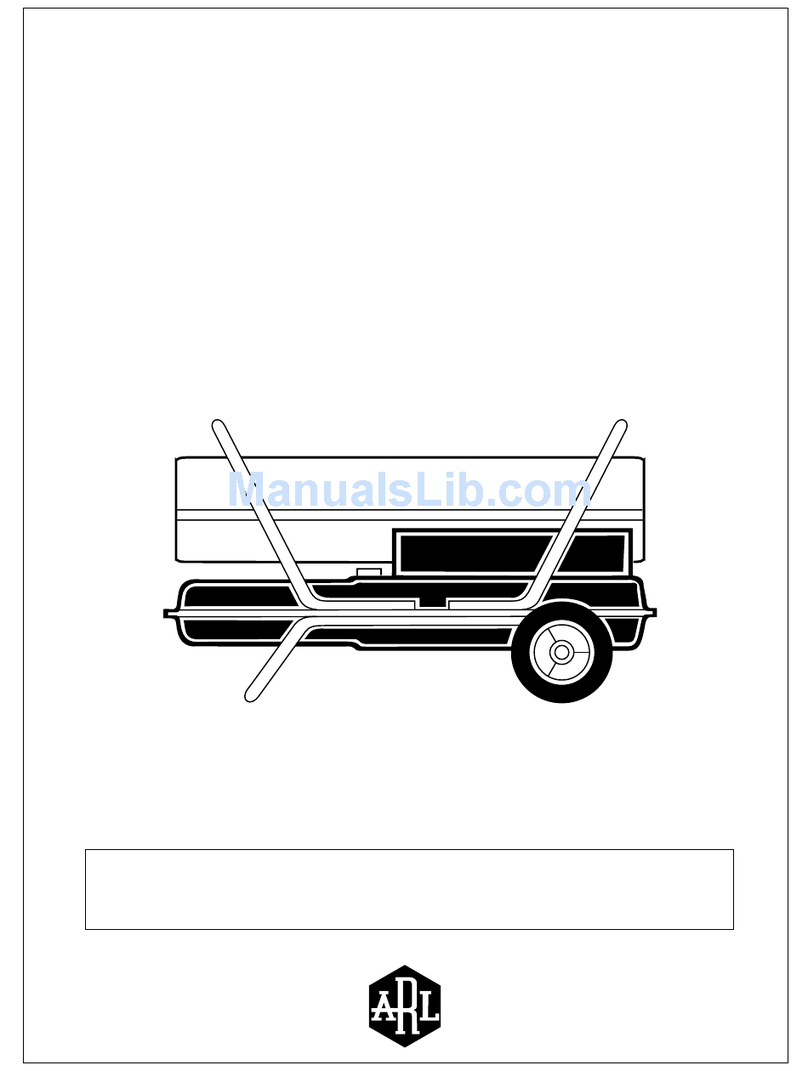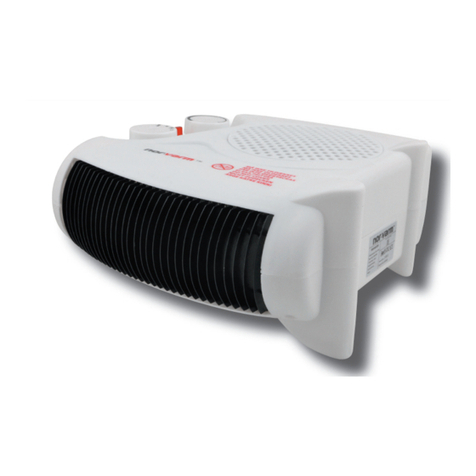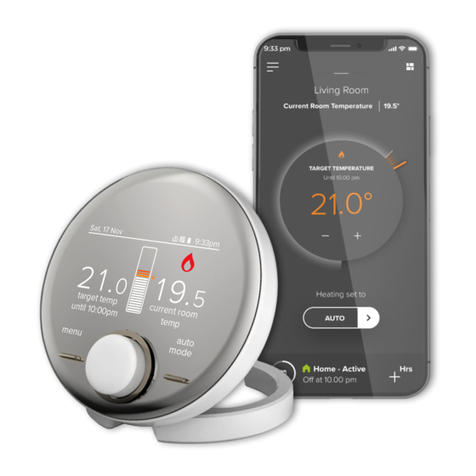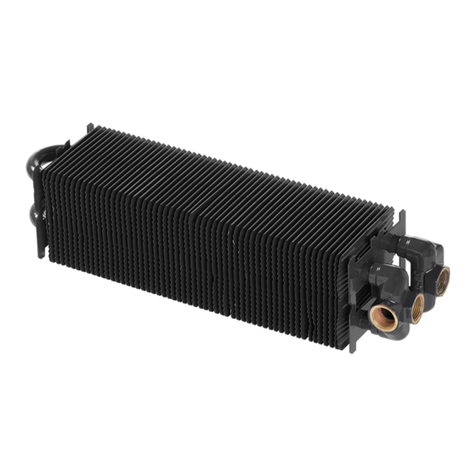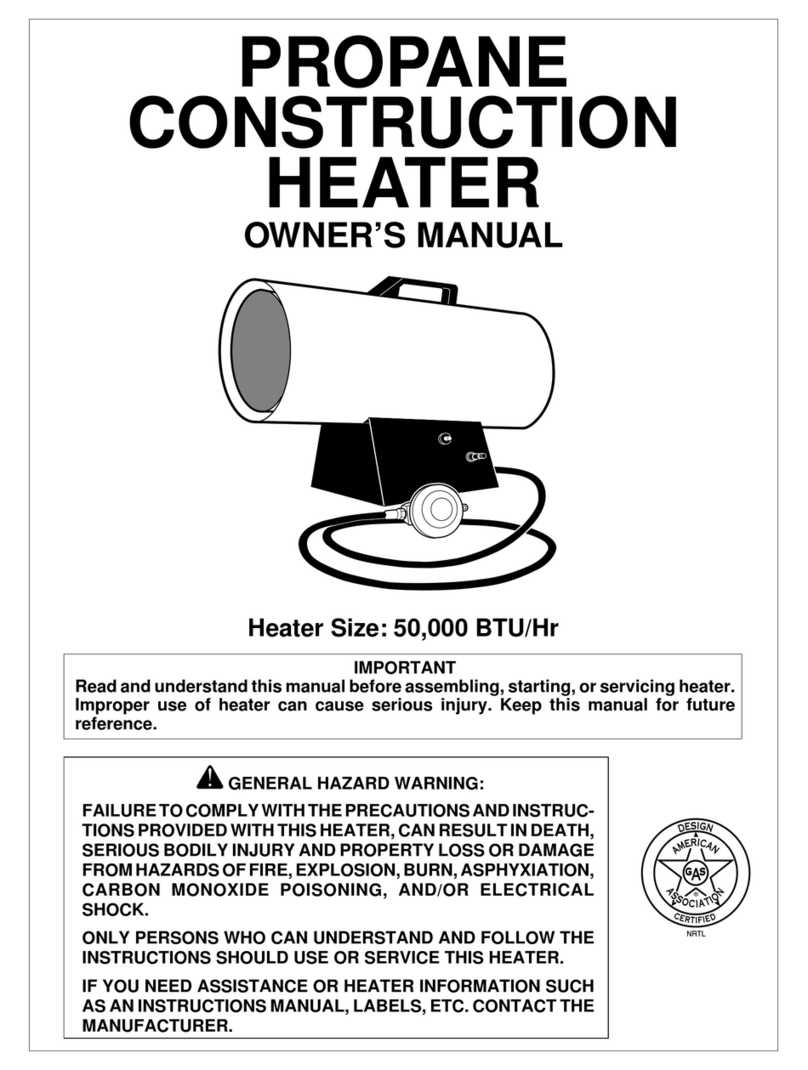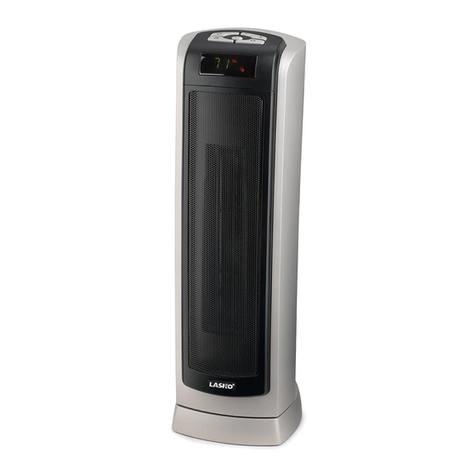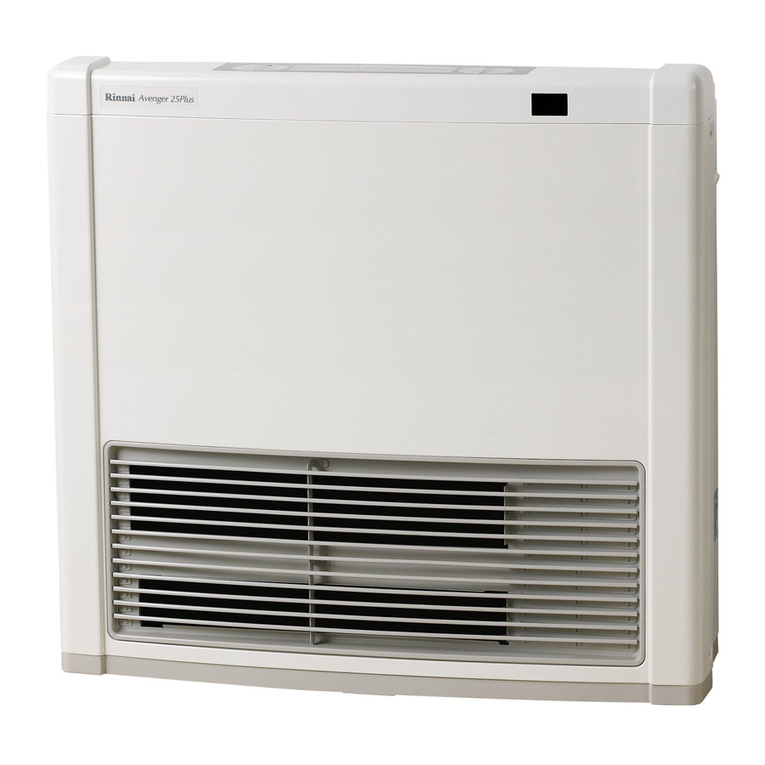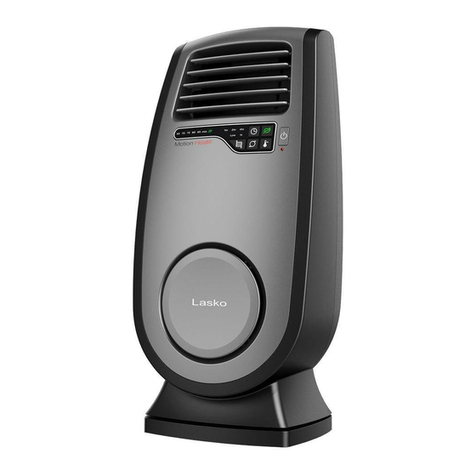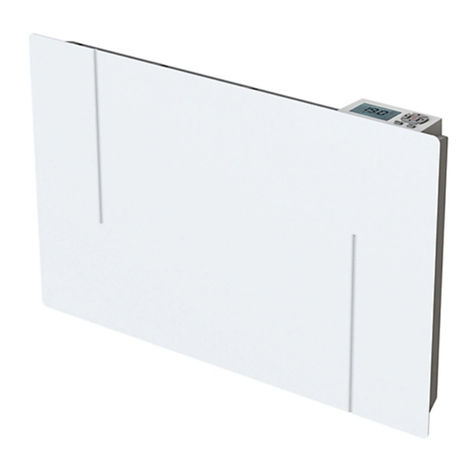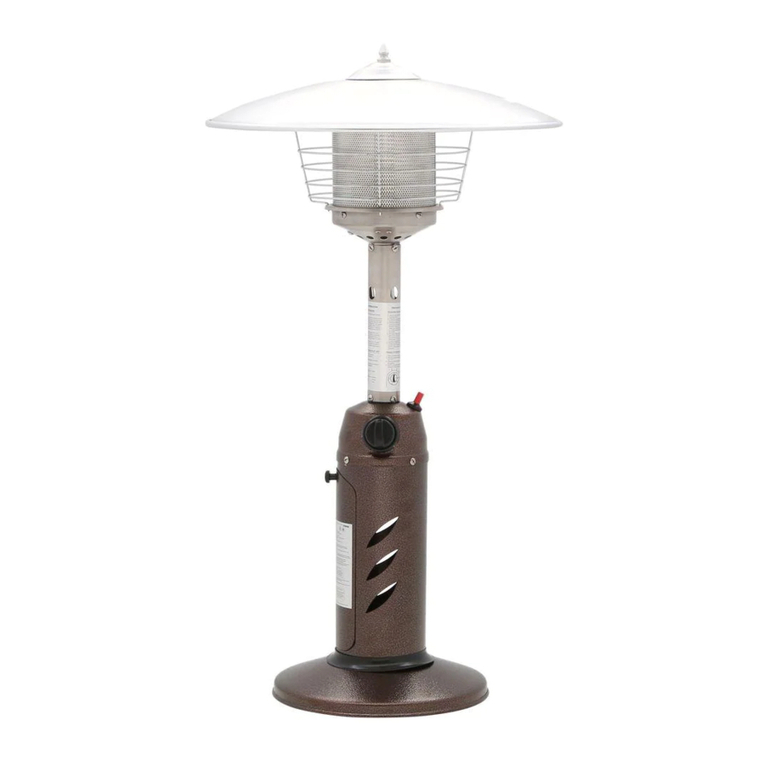Fisher Stoves CHARLESTON Installation instructions

March 2021 www.fisherstoves.co.nz
FISHER CHARLESTON
FISHER DENNISTON
MULTI-FUEL HEATER
INSTALLATION & OPERATION INSTRUCTIONS

March 2021 page 2www.fisherstoves.co.nz
Congratulations on the purchase of your Fisher multi-fuel heater.
Please read this installation and operation manual carefully.
The installation of this fi re must comply with the Installation Standard
AS/NZS 2918:2001 as well as any additional local requirements.
Please ensure you have all relevant permits/building consents prior to installation.
Keep this booklet as a reference guide.
INSTALLATION OF FISHER MULTI-FUEL HEATER
Fisher recommends you use a suitably qualifi ed installation technician to install your fi re. Your dealer or
heating specialist will be able to help with recommendations as well as advise on permits/consents required
for the installation in your area.
Please follow carefully all dimensions and recommendations provided on the individual specifi cation sheet
for your model of heater as these dimensions comply with the required New Zealand standard (AS/NZS
2918:2001).
As safety and emissions performance can be affected by altering the appliance, no modifi cations are
allowed without the written permission from the manufacturer.
INSTALLATION
1. Unpack the heater and check that there is no damage.
2. Ascertain the position of the roof penetration for the fl ue system. A correctly installed
fl ue system will normally prevent down draught problems during windy weather and
eliminate smoke spillage problems due to lack of draught.
3. Ascertain suitable position for appliance and size of fl oor protector and check the ceiling
to ensure that no major structural members will be affected by the path of the fl ue.
4. Check that the sub-structure is capable of carrying the heater (i.e. weight
consideration on the fl oor).
5. Check measurements of the heater to combustibles or shield.
6. Locate the heater in the required position (also see ‘Fitting Seismic Restraint’ after
installation instruction #10).
7. Using a plumb line fastened to the ceiling, mark the centre of the fl ue penetration
position and cut the ceiling hole to the required size and frame out.
8. Install the fl ue system (see fl ue installation instructions supplied with fl ue system).

March 2021 page 3www.fisherstoves.co.nz
Remember:
• The fl ue system should rise vertically from the appliance with as few offsets as possible. Offsets should
be avoided where possible as each change in direction creates a resistance to airfl ow and makes fl ue
cleaning diffi cult.
• The fl ue system must be well sealed with a minimum of 3 fi xings at each joint.
• The fl ue pipe penetrating the chimney must continue to the minimum length of 4.6m from the top of the
fl oor protector to the cowl.
• Flue exiting more than 3 metres from the ridgeline must terminate no less than 1 metre above the roof
penetration (see diagram 1 below).
• Where the top of the fl ue pipe is more than 2 metres above its highest fi xing point, it must be stayed
against high winds.
9. Drill and fi x fl ue system into fl ue spigot with stainless steel self-tapping screws.
10. Drill and secure the appliance to the fl oor protector using the two holes in the rear
legs of the appliance
FITTING SEISMIC RESTRAINT
The Floor Protector must be mechanically fi xed to the fl oor by bolting or screwing.
Note: Floor Protector to be fi xed by gluing when on a concrete fl oor that may have water pipes or electrical
wires present. The appliance can then be bolted to the fl oor protector with two 6mm x 50mm dynabolts.
BAFFLE
Before lighting your appliance for the fi rst time, make sure the baffl e is in the correct position being as far to
the rear as possible.

March 2021 page 4www.fisherstoves.co.nz
WARNINGS
1. WARNING: THE HEATER AND FLUE SYSTEM SHALL BE INSTALLED IN ACCORDANCE
WITH AS/NZS 2918:2001 AND THE APPROPRIATE REQUIREMENTS OF THE RELEVANT
BUILDING CODE OR CODES.
2. PLEASE ENSURE THAT ONLY COMPONENTS APPROVED BY FISHER ARE USED FOR THE
INSTALLATION as substitutes may adversely affect the performance and might nullify compliance with
the requirements of AS/NZS 2918:2001.
CAUTION: MIXING OF HEATER OR FLUE SYSTEM COMPONENTS FROM DIFFERENT
SOURCES OR MODIFYING THE DIMENSIONAL SPECIFICATIONS MAY RESULT IN HAZARDOUS
CONDITIONS. WHERE SUCH ACTION IS CONSIDERED, THE MANUFACTURER SHOULD BE
CONSULTED IN THE FIRST INSTANCE.
3. CAUTION: CRACKED AND BROKEN COMPONENTS, e.g. GLASS PANELS OR CERAMIC BRICKS
MAY RENDER THE INSTALLATION UNSAFE.
Any variation from these installation instructions or any doubts about them must be checked against the
requirements of the AS/NZS 2918:2001.

March 2021 page 5www.fisherstoves.co.nz
CORRECT OPERATION OF YOUR FISHER SOLID FUEL HEATER
Simply by burning your Fisher heater correctly, you can improve effi ciency, reduce fuel consumption
and minimise air pollution.
STARTING A NEW FIRE
Please note: If lighting the heater for the fi rst time dust heater, glass, trim and fl ue before fi ring to avoid
particles sticking or discolouring. Once fi red, some smoke and vapour will be released as the VHT painted
surfaces enter the fi nal curing process. Open all windows and doors while running the fi re on high for up to
3 hours. People with respiratory, heart or other relevant medical conditions should avoid inhaling vapours
during the curing process. All VHT paint will cure at the highest temperature achieved and will produce
smoke again if this temperature is exceeded.
To start and maintain a good fi re you will need the following ingredients:
1. A small quantity of newspaper (do not use coloured or coated paper);
2. A packet of fi relighters (optional)
3. A quantity of fi nely split, dry soft wood kindling in a variety of sizes; and
4. Seasoned fi rewood split into a range of piece sizes.
The fi rst step is to crumple half a dozen sheets of newspaper and
put them just inside the fi rebox. The amount of newspaper you
need will depend on the fi rebox size, and the dryness and fi neness
of the kindling you are using. The drier and fi ner the kindling, the
less newspaper you need. Many people make the mistake of using
too little newspaper. Be generous with the newspaper and you
will have more success. Putting some fi relighter halves under the
newspaper can also help sustain fi rebox temperature until the
wood is burning.
On top of the paper place 10 to 15 pieces of fi nely split, dry
kindling. Softwoods, such as cedar or pine, make good kindling.
Ideally, the kindling should be placed on the newspaper so that the
combustion air reaches the newspaper fast where you ignite it. It is
also a good idea to add two or three very small pieces of fi rewood
to the kindling load before lighting.
TO BUILD A QUICK,
HOT FIRE
Use plenty of crumpled newspaper
and dry, fi nely-split kindling. Set
the air control fully open. Light
the newspaper near where the
combustion air enters the fi rebox.
When a kindling fi re is built properly,
you should expect fast ignition
and no smouldering.

March 2021 page 6www.fisherstoves.co.nz
Set the air control to fully open, light the fi relighters or the newspaper and close but do not latch the door.
After about 5-10 minutes, when the wood is fl aming brightly, latch the door (some longer fl ue installations
may require door to be left unlatched for up to 15 minutes until the fl ue system is warm and producing strong
draught). Since leaving the door open slightly can cause dangerously high temperatures, never leave the
woodstove unattended while starting the fi re.
When the fl ames from the kindling load just begin to subside, add several small pieces of fi rewood. Try to
avoid smothering the fi re with the new pieces. Placing the pieces on the burning kindling can help prevent
smothering. As your Fisher heater is a radiant heater it requires approximately 45-60 minutes to preheat the
steel fi rebox before it can effectively radiate heat into the room. Place fi rewood in a uniform position, front
to rear loading. A well maintained, hot fi re will reduce the preheat cycle.
REKINDLING A FIRE FROM CHARCOAL OR EMBERS
Embers found at the back of the fi rebox should be raked evenly
around the fi re. If only a small amount of embers remain, you will
have to start with kindling. If there is a good quantity of glowing
embers to work with, place at least three, and preferably more than
fi ve pieces of small fi rewood on the embers. Open the air inlets
fully and close the door.
If everything is just right, fast ignition of the new load should be
expected. Allow the fi re to burn with bright turbulent fl ames until
the wood is completely alight. This usually takes between 15 and
30 minutes, depending on the size of the pieces and the moisture
content of the wood. When the wood is burning well, reduce the air
setting to produce the amount of heat and length of burn desired.
Reducing the air control setting in two or three stages will result in
less air pollution because the fi re will not have to recover from the
single, large reduction in air supply.
The most important rule is NEVER LET THE FIRE SMOULDER. As long as there is solid wood in the
fi rebox, there must be fl ames present or the unburned gases will escape, both reducing effi ciency and
increasing air pollution.
Always open the fi re door slowly to allow fresh air to enter and maintain the smoke path. If you open the door
too quickly, smoke can puff out.
TO REKINDLE A FIRE
FROM HOT COALS
Spread the charcoal evenly
throughout the fi rebox. Place small
pieces of wood on and behind the
coals. Open the air inlets fully and
leave them open until the pieces
of wood are well charred. This
illustration shows the arrangement
of pieces for an extended fi re.

March 2021 page 7www.fisherstoves.co.nz
SOME OTHER USEFUL TIPS
Fuel load geometry: Small pieces of fi rewood arranged loosely in a crisscross pattern burn quickly because
the combustion air can reach all the pieces at once. Larger pieces placed a little more compactly burn
slower. Once your heater has reached maximum temperature, it is more effi cient to top up frequently with
about 25% of a full load rather than let the fi re die down and need to completely refi ll it.
SMALL AND LARGE FUEL LOAD GEOMETRY
Fire in cycles: Don’t expect perfectly steady heat output from your
Fisher heater. Solid fuel heaters burn in cycles. A cycle is the time
between the ignition of a load from charcoal and the consumption
of the load back to a coal bed. Plan the fi ring cycles around your
household routine. If someone is home to operate the heater, build
a small hot fi re. If you must be away from the house during the day,
build a long-burning fi re.
The small, hot fi re: A small, hot fi re is a small amount of wood
burned quickly. Use it when you just want to take the chill off the
house. The small hot fi re technique eliminates the smouldering
fi res that are common when people don’t need their heater running
hot all the time, like in spring and autumn. To build a small hot
fi re, rake the embers evenly in the fi rebox and place several small
pieces of fi rewood on it. The bottom layer should be placed to
ensure that combustion air can fl ow over the embers and along
the length of the pieces of wood. The next layer should be stacked
loosely in a crisscross arrangement. Open the air inlet to produce
a hot, bright fi re. After approximately 15–20 minutes the air supply
can be reduced slightly as the fi re progresses, but never enough to extinguish the fl ames. When only
charcoal remains, the air supply can be reduced further to prevent cooling the ember bed. Reload with small
pieces often, as full loads will smother the ember bed.
A SMALL-STACKED FUEL LOAD
Good for short-duration fi res.
A LARGE-STACKED FUEL LOAD
Good for extended burning cycles
(see above)
LOADING FOR A SMALL
HOT FIRE
Rake the embers evenly. Load
the wood loosely in a crisscross
arrangement. Let the fi re burn
brightly until most of the solid
wood is burned before reducing
the air setting.

March 2021 page 8www.fisherstoves.co.nz
The long-burning fi re: To achieve a long burning fi re, rake the embers evenly, as with the small hot fi re, and
use larger and more pieces of wood. Place the pieces in a similar pattern to the small hot fi re, using more
pieces and larger pieces (especially the top layer). Always make certain that there is a gap between the
pieces to ensure that the combustion air can reach all pieces. Open the air inlets fully for between 15 to
30 minutes depending on load size and fuel moisture content. When the fi re is burning fi ercely (at least 15
minutes), reduce the air control in stages to the desired level. This allows you to turn down the air control and
still maintain a clean-burning fi re.
REMEMBER: NEVER LET THE FIRE SMOULDER.
Preventing creosote build-up: Creosote is a tar-like substance that builds up when the organic
compounds in smoke condense onto cooler fl ue surfaces. Left to build up over time, creosote will restrict the
airfl ow of the fl ue and impair the performance of your heater. The production of smoke is at its highest when
a fresh fuel load is added or when the air control is at its lowest position. The most effective way to control
the creosote formation is to burn the heater so as to ensure as complete combustion as possible and at the
same time promoting higher fl ue temperatures. Smoldering fi res should always be avoided.
The amount of charcoal in the ash is often a good indicator of how well you are operating the heater.
If there is no charcoal and only very fi ne ash, then you are doing an excellent job. If there is a lot of
charcoal you may be turning the combustion air down too soon after re-fuelling, or not raking the charcoal
to the combustion air inlet, or turning the combustion air down too low to support effi cient combustion,
or all of the above.
REMEMBER: THE HOTTER THE FIRE, THE LESS CREOSOTE FORMATION.
When you have mastered the techniques for effi cient wood burning, here is what you should see:
1. When wood burns it should be fl aming until only charcoal remains. If there are no
fl ames, something is wrong.
2. Firebricks in the fi rebox should be tan in colour, never black.
3. Steel parts in the fi rebox should be light to dark brown, never black and shiny.
4. With seasoned wood, correct air settings and proper loading arrangement you should
expect quick ignition of a new load of wood - the bottom pieces should be fl aming by
the time the door is closed.
5. The glass door should be clear. A discoloured glass indicates that the wood is too wet
or the air control has not been left open long enough.
6. The exhaust coming from the top of the fl ue system should be clear or white. A plume
of blue or grey smoke indicates smouldering, ineffi cient combustion, air pollution and
probably low operating temperatures.

March 2021 page 9www.fisherstoves.co.nz
Correctly installed and operated, Fisher solid fuel heaters do not spill smoke into the house. There are three
main reasons why some woodstoves smoke:
Bad installation design: Incorrect fl ue installation, resulting in low fl ue temperatures and low draught, can
make a wood heater more likely to spill smoke. For example, fl ue systems that run up the outside wall of the
house and are not correctly insulated can rob the heat from the fl ue and produce very little draught. Each
elbow in the fl ue pipe assembly slows down the fl ow of gases and causes a small restriction to fl ow. When a
fl ue system includes more than one elbow, the restriction can be enough to cause spillage.
Extreme negative pressure in the house: Energy effi ciency practices and new building code rules are
making our houses more and more airtight. This makes the houses energy effi cient, but also makes them
more sensitive to negative pressure when air is exhausted from the house. Large, fan-forced exhaust
ventilators, like down-draught-type kitchen stove exhausts, can cause extreme negative pressure in the
house when they are operating. Because new houses are tightly sealed, there are few holes to allow
replacement air to enter, and the house pressure becomes negative. This negative pressure works against
fl ue system draught. In severe cases, the negative pressure in the house overcomes the fl ue system draught
and the appliance begins to spill smoke, especially when a fi re is started or when it dies down to coals.
To prevent this extreme negative pressure, one option is to open a window slightly to allow combustion air
into the room.
Improper heater fi ring technique: When a solid fuel heater is starved for air it smoulders, producing a
relatively cool, smoky fi re. The temperatures throughout the system are low. During a smouldering fi re,
the fl ue system will not be receiving the hot gas it needs to produce strong draught. When the heater
door is opened, smoke will spill into the room. A smouldering fi re is the single most common reason for
smoke spillage and totally unnecessary. By using the suggestions on proper fi ring technique earlier in this
document, you will be able to avoid these smouldering fi res.
PURCHASING THE FIREWOOD
The quality of the fi rewood you burn can have a dramatic effect on the effi ciency and operation of the heater.
The main factors that affect the burning characteristics of fi rewood are moisture content, tree species and
piece size.
The moisture content of the wood affects the rate at which it burns and the effi ciency of combustion. When
trees are cut, the wood moisture content ranges between 35 and 60 percent by weight. If you attempt to burn
wood this wet it will be hard to ignite, slow to burn and will hiss and sizzle in the fi rebox. So much energy will
be consumed in boiling off the excess water that the effi ciency of combustion and the heat to your home will
be low, condensation and corrosion may be occurring in the fl ue and smoke may be causing problems to
your neighbours. Properly seasoned wood ignites readily and burns effi ciently.
PLEASE NOTE: WOOD WITH A MOISTURE CONTENT OF 25% OR LESS IS THE ONLY APPROVED
WOOD TO USE IN CLEAN AIR ZONES.

March 2021 page 10www.fisherstoves.co.nz
Firewood should be cut and split in the early spring and stacked under cover, with
good ventilation, to be ready for burning when required.
Look for checks or cracks in the end grain as a sign of dry wood. The stacks of fi rewood should be in an
open area so that air can circulate through them. During the summer, as warm breezes fl ow through the
stacks, carrying away the evaporating water, the moisture content of the wood will fall to around 20 per cent.
At this moisture content the wood is ready for burning.
Although the energy content of dry wood per kilogram is almost the same regardless
of species, some burn differently because of differences in density e.g pine is less dense than woods like
gums, Manuka or Black Wattle. A denser wood will produce a longer-lasting coal bed, while a less dense
wood will bring a fi re to an optimum burning temperature more quickly.
The size of the fi rewood pieces affects the rate of combustion. Larger pieces ignite and release their energy
more slowly than small pieces. Smaller pieces are better for short, hot fi res and larger pieces are preferable
for extended fi ring cycles. In general, commercial fi rewood dealers supply fi rewood in thicker pieces than
modern wood-burning heaters can handle. It is often necessary to split some of the wood again before using
it. The thickest piece size for high-effi ciency heaters should not exceed about 150 mm (6 in.) across the
largest dimension and a range of smaller pieces will be needed for effective stoking. Maximum log length
varies according to model.
BURNING COAL
When using coal, the only type you should use is sub-bituminous coal (check with your local supplier). Note:
removal of the safety tab on the ash door pan will cause severe damage due to overheating from excessive
air supply. Removal of tab will void warranty.
Please also refer to ‘Exclusions’ in the Warranty Page 14.

March 2021 page 11www.fisherstoves.co.nz
FISHER SOLID FUEL HEATER MAINTENANCE
To keep your heater burning clean and effi cient it is important that you carry out regular
maintenance. General maintenance checks should include the following:-
ASH REMOVAL: As excess ash builds up, it can easily be removed through the grate
and into the ash pan. Please Note: both the main door and the ash
pan door need to be open to allow safe removal of the ash pan.
Please use the ash pan handle provided even if the heater is cold as
ashes can remain very hot for several days. Only use metal tools and
containers when handling ash.
SURFACES: Fisher solid fuel heaters have high temperature paint surfaces which
just need wiping to clean when the fi re is cold.
FIREBOX: Check the fi rebricks, top baffl e, air tube and interior surfaces. These
parts are subjected to considerably high temperatures and stress and
some parts will eventually need replacing.
DOORS: Check all gaskets used for wear and replace if necessary. Adjust door
fi tting if required.
LUBRICATION: All moving parts should be lubricated with graphite grease every
couple of months.
CHIMNEY CLEANING AND CHECKING FLUES
For all multi-fuel heaters, fl ue cleaning must be done regularly to avoid serious fl ue fi res. Frequently used
heaters should be cleaned at least once a year (some sooner). The cleaning rate, however, depends on the
burning habits of the individual operating the wood heater. For example, it is possible to clog a fl ue in just a
few weeks if smouldering fi res are burnt and the fl ue is run cold.
It is recommended that fl ue sweeping be done by a professional chimney sweep. Chimney sweeping is a
specialist task and competent professional sweeps are available throughout the country. When the fl ue is
cleaned it is recommended that other parts, such as baffl es, are checked.
Flue systems should be checked at least once or twice a heating season. Flue systems may require
checking more often if the fuel or operation of the appliance is incorrect. When a fl ue system becomes
excessively blocked or requires frequent cleaning, advice should be sought to investigate the installation
and the operation of the heater. Flue pipes can deteriorate very quickly with incorrect fi ring.

March 2021 page 12www.fisherstoves.co.nz
CONSUMABLES
Some parts of your Fisher fi re are considered consumable. They are designed to be replaced as they will
degrade over time. The life of the consumables will vary depending on;
• Frequency of use. How often the fi re is used
• Rate of burn. Is the fi re burning on low or high the majority of the time
• Type of fuel. Some woods are much harsher than others
General items that are considered consumables:
• Baffl es
• Fire bricks
• Air tubes (Denniston only)
• Glass and door ropes
• Grates
It is very important that you replace these parts when they show sign of wear. They effect how the fi re runs
and you may increase your fuel consumption or lower your effi ciency if not replaced, and can in some cases,
damage the fi rebox. It is generally obvious once a part is in need of replacement. Steel components may
split or large holes may appear, fi re bricks may crack and disintegrate. We recommend you check your fi re
visually several times a year for damaged components.
WARNINGS
Below is a list of warnings to ensure effi cient and safe operation of your Fisher heater:
• WARNING: DO NOT USE FLAMMABLE LIQUIDS OR AEROSOLS TO START OR
REKINDLE THE FIRE.
• WARNING: DO NOT USE FLAMMABLE LIQUIDS OR AEROSOLS IN THE VICINITY OF THIS
APPLIANCE WHEN IT IS OPERATING.
• WARNING: DO NOT STORE FUEL WITHIN HEATER INSTALLATION CLEARANCES.
• WARNING: OPEN AIR CONTROL BEFORE OPENING FIRING DOOR.
• CAUTION: THIS APPLIANCE SHOULD NOT BE OPERATED WITH A CRACKED GLASS.
• CAUTION: THIS APPLIANCE SHOULD BE MAINTAINED AND OPERATED AT ALL TIMES IN
ACCORDANCE WITH THESE INSTRUCTIONS.
• CAUTION: THE USE OF SOME TYPES OF PRESERVATIVE-TREATED WOOD AS A FUEL
CAN BE HAZARDOUS.
• CAUTION: USE ONLY SUB-BITUMINOUS COAL IN THIS APPLIANCE.
• CAUTION: NEVER LEAVE THE ASH PAN DOOR OPEN WHEN RUNNING THIS APPLIANCE.

March 2021 page 13www.fisherstoves.co.nz
FISHER FIRE WARRANTY
THIS IS AN IMPORTANT DOCUMENT – KEEP IT IN A SAFE PLACE
CONGRATULATIONS!
We appreciate your decision to invest in our product. Your heater will become an integral part of your
lifestyle, heating your home during the colder months and at the same time maintaining its appearance as a
quality appliance. We want you to get the best possible performance from your fi re and for this reason ask
that you read this booklet carefully to take full advantage of your warranty.
In particular we urge you to have your heater and fl ue inspected annually and the fl ue swept if necessary.
At the same time any other minor potential problems can be detected and corrected before they turn into
major ones.
We think this is a small price to pay to ensure your heater is kept in peak condition. There is no doubt in
our minds that you will extend the life of your heater.
We select only certain companies to act as our Fisher fi re dealers as we believe they must have high
standards and be able to provide a total service both pre and post sale to you the customer. Therefore we
have every confi dence that our dealers will be able to answer your questions or fi x any problem that may
occur. If you have any further queries, please contact us at:
RETAIL LINKS
P O BOX 9056
ANNESBROOK
NELSON
NEW ZEALAND
FAX: 03 5470780
EMAIL: [email protected]
Thanks again for choosing a Fisher multi-fuel heater. We wish you many warm winters to come!

March 2021 page 14www.fisherstoves.co.nz
FISHER FIRE MULTI-FUEL HEATER WARRANTY
5 YEARS (conditional)
Standard Warranty
This heater is warranted for fi ve years, with the exception of the following: - door seal, glass, glass seal,
fi rebricks, secondary air systems, coal grate and removable baffl e, paint and exterior fi nishes which will
have a twelve month warranty (parts only), provided it has been installed by a suitably qualifi ed installation
technician.
Conditions
The heater must be installed in accordance with the manufacturers’ instructions and all relevant standards,
regulations and by-laws. The company is not liable for any consequential damage by a failure or defect
covered by this warranty. All claims against this warranty must be directed fi rst to the retailer of the store.
Any repairs undertaken without the written authority of the Manufacturer, will invalidate this warranty.
If a Water Booster is fi tted, it must be a Fisher Water Booster in order to be warranted.
The warranty is only valid to the initial purchaser of the product.
Exclusions
This warranty does not cover damage caused by:
• Mishandling, misuse, abuse, alteration.
• Normal wear and tear.
• Work done by others such as installers, plumbers or chimney sweeps.
• The burning of coal – other than sub-bituminous, household rubbish, particle board or the like, salt laden
driftwood or any chemically treated wood or fuel of any kind.
• Other products such as fl ues or non genuine replacement parts.
The warranty does not cover delivery of the defective part to the dealer or its reinstallation following repair
or replacement.
The manufacturer is not responsible for site conditions such as draughts, cleaning and servicing.
Procedure
If a defect occurs, contact your dealer and the part will be repaired or replaced at our option.
Transferability
This warranty is non transferable.
It is recommended you have your dealer inspect your heater annually during the warranty period.
FISHER reserves the right to change specifi cations or design of its product without prior notice.

WARRANTY CARD
PLEASE COMPLETE AND RETURN WITHIN 30 DAYS OF INSTALLATION TO:
RETAIL LINKS LTD
PO BOX 9056
ANNESBROOK, 7044
NELSON
NAME: _____________________________________________________________________________
ADDRESS: ___________________________________________________________________________
____________________________________________________________________________________
____________________________________________________________________________________
EMAIL: ________________________________________ PHONE: _______________________________
FISHER MODEL: ______________________________________________________________________
SERIAL NUMBER: _____________________________________________________________________
DATE PURCHASED: ____________________________________________________________________
PURCHASED FROM: ___________________________________________________________________
DATE INSTALLED: _____________________________________________________________________
INSTALLED BY: _____________________________________________________________________
March 2021 www.fisherstoves.co.nz
This manual suits for next models
1
Table of contents
Popular Heater manuals by other brands
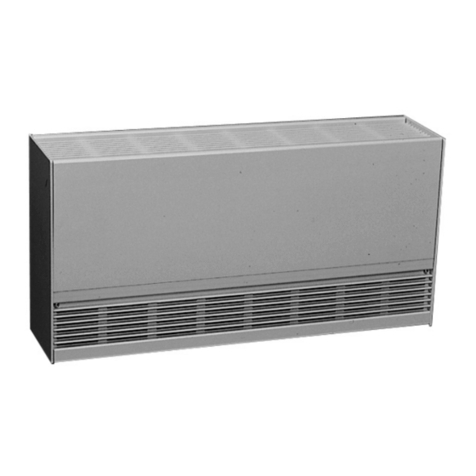
Chromalox
Chromalox CAF-12 Installation, operation and maintenance
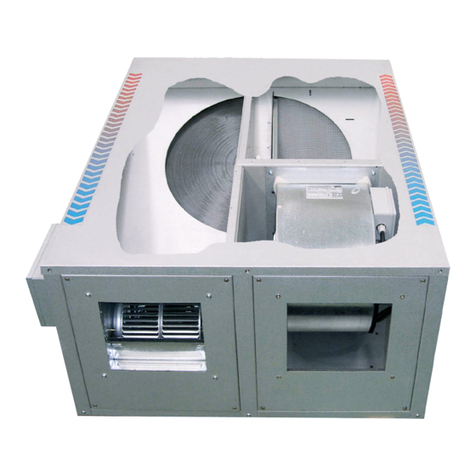
SIC
SIC CFR Series Installation, use & maintenance manual

Burda
Burda RELAX io IP65 Instructions for use
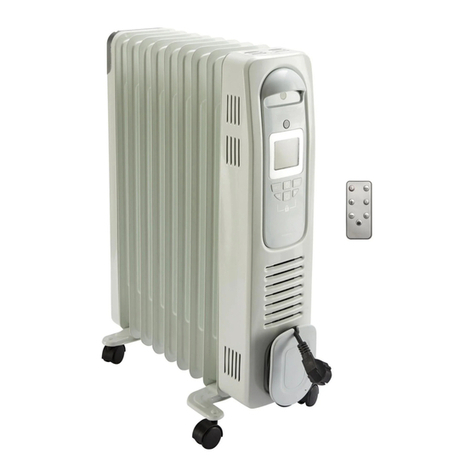
EQUATION
EQUATION OH-1B instruction manual
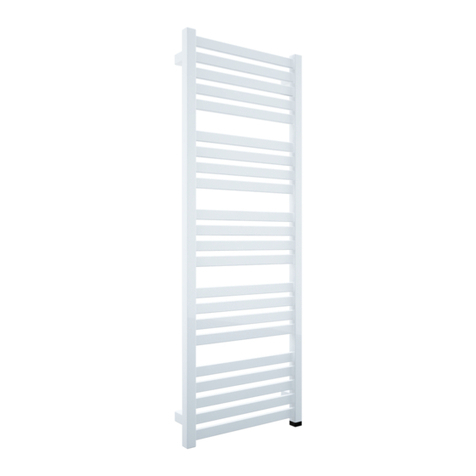
Etherma
Etherma BHK user manual

BENSON
BENSON AH150 Installation, commissioning and user instructions
